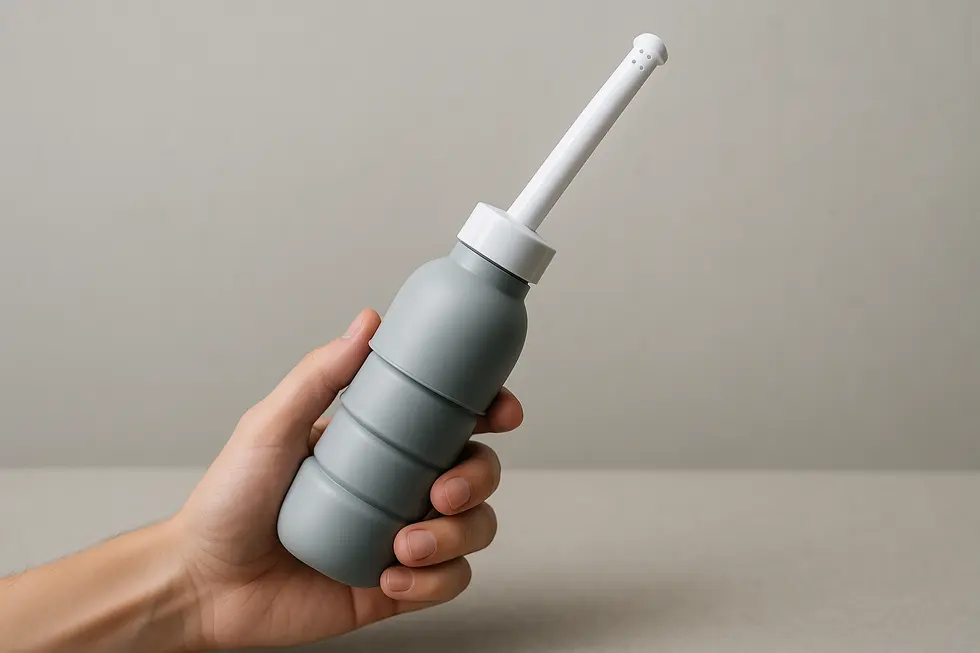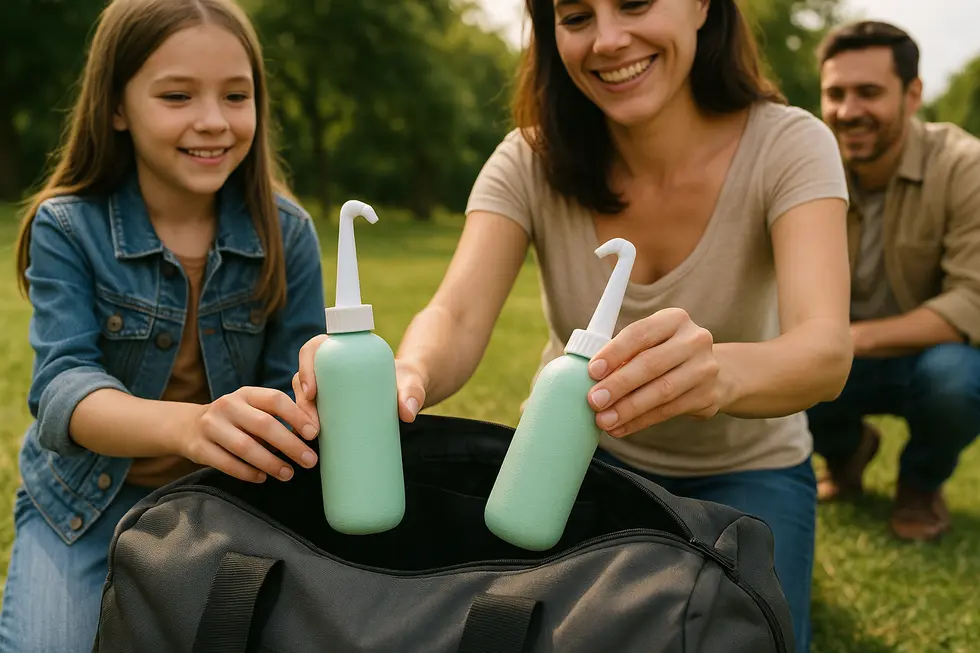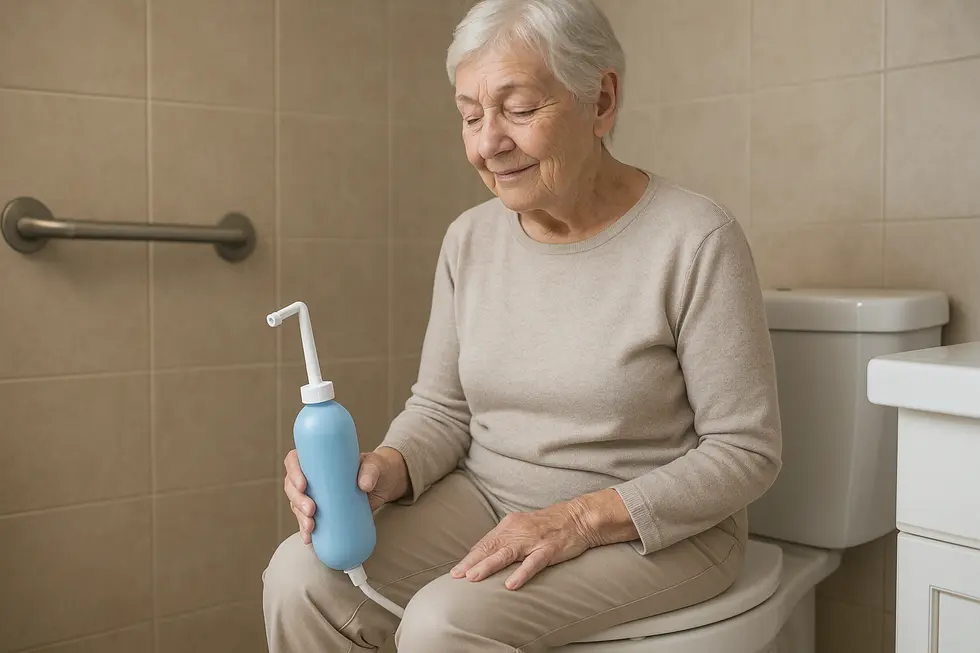Portable Bidet
Portable Bidets: A Modern Solution for Hygiene on the Go
Portable bidets offer a practical and hygienic solution for families seeking convenience and cleanliness on the move. These compact devices are not just travel essentials but also provide environmental and health benefits. This article examines the technological innovations defining modern portable bidets, highlights the economic and environmental impact of their adoption, and explores the health, hygiene, and societal implications associated with their usage.
From Squeeze Bottles to Smart Sprays: Innovation Driving the Portable Bidet Revolution

Today’s pocket-sized bidet embodies years of quiet engineering evolution. Early travel models were little more than repurposed peri bottles; modern versions now pack precision spray mechanics, leak-proof seals, and eco-conscious materials into containers that disappear inside a jacket pocket. At the heart of this progress is the marriage of ergonomic squeeze technology with universal nozzle geometry. Soft, food-grade silicone walls rebound instantly, giving users steady pressure without hand fatigue, while telescoping tips angle water precisely toward hard-to-reach areas regardless of toilet shape. Field testers report that the latest heads deliver a wider yet gentler cone, cutting rinse time and, by extension, water use.
Engineers have pursued sustainability just as aggressively. By swapping single-use wipes for a 500-millilitre refillable reservoir, travelers can slash paper consumption by roughly 80 percent—a figure borne out in life-cycle analyses. The body of the bottle is increasingly molded from post-consumer plastics or bio-based polymers, and every detachable part is designed for straightforward recycling at end of life. Some innovators even integrate carbon-filtered caps so stray droplets return to nature free of contaminants.
Portability, however, is not measured only in weight. Designers now treat the humble carry pouch as a micro-ecosystem. Antimicrobial linings, breathable mesh, and discreet drainage channels allow a still-damp bidet to ride inside a laptop bag without fear of mildew. Travelers who want deeper insight into their routines can choose models whose caps accept a clip-on pressure meter, translating each squeeze into data stored on a smartphone. While such sensors remain optional curiosities, they hint at a future where personal hygiene devices join the wider Internet of Things.
For now, the most tangible innovation remains the no-mess refill experience. Thread-on adapters let users convert any standard water bottle into a hygienic sprayer in seconds, a boon on long hikes or layovers. To appreciate how far the format has come, explore the documented advantages of squeeze-bottle travel bidets.
As miniaturized heaters and UV self-cleaning modules migrate down from luxury smart toilets, the next generation of portable bidets will likely blur the line between wellness gadget and environmental statement, a shift already mapped in the global smart toilet market.
From Wallet to Planet: The Double Dividend of Portable Bidet Adoption

Beyond the bathroom, a portable bidet rewrites two important ledgers: the household budget and the planet’s resource balance. A single person flushes away roughly 55 pounds of toilet paper a year. Replacing most of those sheets with a palm-sized water sprayer cuts annual paper consumption by more than half and, according to multiple cost analyses, keeps about $50 in your pocket. The math scales quickly. In a four-person home, a modest travel device can offset the price of several grocery runs within twelve months.
Water use tells a similar story of thrift. A manual squeeze bottle releases only about 0.17 gallons per cleansing—barely a teacup—while every flush of a standard toilet gobbles up 1.6 gallons. That difference compounds day after day, trimming utility bills without demanding new plumbing or electricity. Portable units, unlike built-in bidet seats, ask nothing more than a fill from the tap and a gentle press of the hand.
The environmental ripple is even wider. Toilet paper production is a thirsty, timber-hungry process: one roll requires approximately 37 gallons of water and a third of a pound of virgin wood. When a household slashes its paper order by two-thirds, it preserves dozens of trees over a decade and spares thousands of gallons of chemically treated pulp water from entering rivers. For travellers and renters, a portable model offers an eco-friendly upgrade without drilling holes or convincing a landlord.
Those individual choices, multiplied across millions, are reshaping the market. Analysts project the broader smart-toilet and bidet sector to exceed $28 billion by 2034, driven largely by consumers seeking low-impact hygiene solutions. Portable models sit at the gateway of that trend, introducing newcomers to the comfort of water cleansing before they invest in permanent fixtures. The surge is most pronounced in regions already conscious of conservation, but Western interest is accelerating as people research the environmental benefits of portable bidets.
In short, a travel-sized bidet is more than a convenience; it is a small, affordable technology that quietly compounds savings while aligning everyday habits with global sustainability goals.
Beyond Clean: How Portable Bidets Elevate Health, Dignity, and Sustainability

Water cleansing has long been regarded as the gold standard of toileting hygiene, yet until recently it was bound to fixed plumbing. The rise of compact, squeeze-driven portable bidets places that standard in a jacket pocket, letting travellers, new mothers, and backpackers maintain clinic-grade cleanliness anywhere. Unlike dry paper, a focused water stream physically rinses away residue rather than smearing it. The result is a fresher feeling and a cleaner microbiological slate, laying the foundation for measurable health gains.
Medical data ties proper washing to fewer urinary tract infections because bacteria are flushed before they migrate. Gentle pressure prevents micro-abrasions that can inflame hemorrhoids or trigger eczema flare-ups. Because water preserves the skin’s acid mantle, pH remains stable and itching subsides. Users recovering from surgery, childbirth, or irritable bowel episodes report less pain and faster healing when wiping is replaced by rinsing. Clinicians increasingly recommend bidet bottles as part of perineal care kits, a stance echoed in this overview of the surprising health benefits.
That same stream carries emotional weight. For seniors with arthritis or limited reach, pressing a soft bottle is easier and safer than twisting to wipe. The regained independence reduces caregiver burden and preserves dignity, which occupational therapists cite as vital to overall mental health. Portable bidets are also making inroads in public spaces; some airports now sell them alongside travel toiletries, acknowledging a cultural pivot toward inclusive hygiene. In cultures where water has always been the norm, these devices help immigrants maintain familiar habits without retrofitting rented bathrooms.
Beyond personal well-being lies a collective victory. Swapping paper for water can slash toilet tissue consumption by up to 90%, saving trees, transport fuel, and the bleaching chemicals that irritate delicate skin. Researchers estimate one traveller with a bottle bidet avoids roughly 250 rolls over five years. Such numbers explain why sustainability advocates highlight the comprehensive benefits of portable bidets when promoting zero-waste kits. Meanwhile, technology borrowed from smart toilets—self-cleaning nozzles, UV reservoirs, even basic temperature indicators—is trickling down into portable models, ensuring the next generation delivers spa-level cleanliness wherever plumbing is optional.
Final thoughts
Portable bidets are redefining personal hygiene, offering families a versatile tool for better health and sustainability. From advanced designs to eco-friendly benefits, these devices cater to a wide range of needs, enhancing both daily life and travel experiences. Embracing portable bidets can lead to meaningful improvements in cleanliness, comfort, and environmental responsibility.
Experience a new standard of clean with PEGABidet—designed for comfort, safety, and independence. Join thousands who trust us to make personal care simple and dignified. Contact us contact@pegabidet.com
About us
PEGABidet is a brand owned by L.A NEXTGEN LLC, based in California. We design intuitive, hygienic, and accessible bathroom solutions that prioritize safety, dignity, and independence. Our mission is to make personal care effortless and empowering for people at every stage of life.

